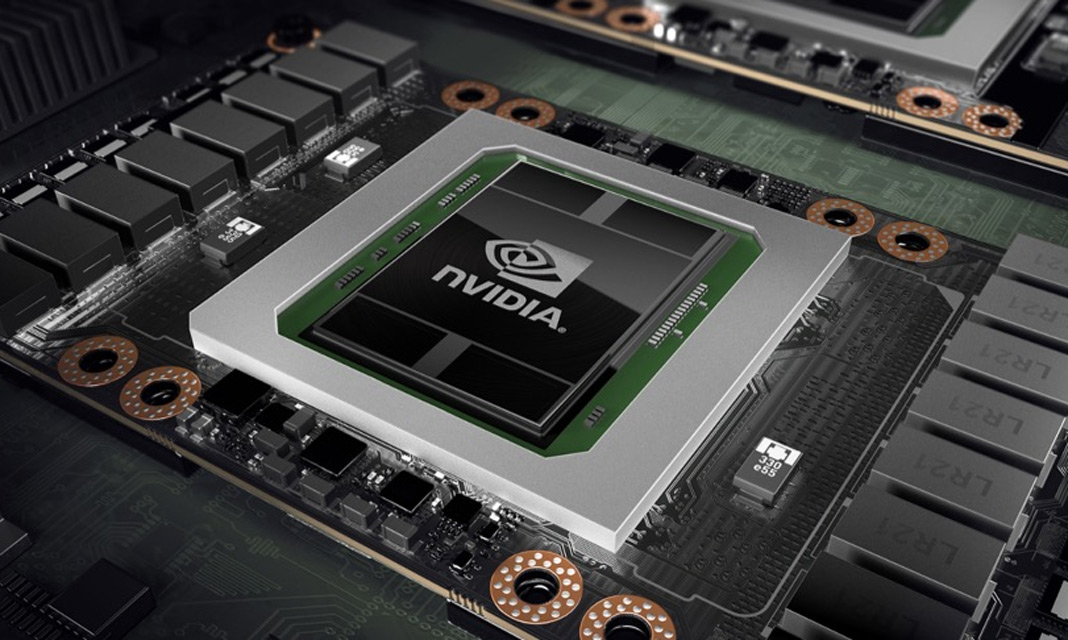

This removable section is useful when two GeForce GTX 1080 Ti cards are paired directly next to each other in an SLI system, where the lower card receives less airflow due to the other card being placed directly above it. The housing of the GeForce GTX 1080 Ti Founders Edition features a die cast aluminum body and includes a low-profile backplate with a removable section. For those wondering the Ti model weighs 1041 grams while the original 1080 tips the scales at 1029 grams. Nvidia also says that the 1080 Ti features improved cooling performance that will provide lower temps while making less noise, so that's a win win. Of course, there's the little Ti nomenclature tacked onto the end of the GTX 1080 label which looks a bit special, even if it isn't correctly centered - this one messed with my OCD. With the card on hand, I can say it looks almost identical to the GTX 10, and I love the look of these Founders Edition cards. It also manages to cram more transistors in a smaller die area of just 471mm2, some 20% smaller for 50% more transistors. Impressively, the 1080 Ti features the same 250-watt TDP rating as the 980 Ti.

Officially, Nvidia is claiming that the GTX 1080 Ti will be roughly 20 to 40% faster than the vanilla 1080, given the specs that certainly sounds right. That's not far off the performance of first generation HBM. The end result is an impressive memory bandwidth of 484 GB/s. Although the Ti features a narrower 352-bit memory bus, the higher clocked GDDR5X memory is able to compensate. The peak compute throughput of the GTX 1080 Ti is also slightly higher than the Titan X due to the Ti's higher Boost clock and memory bandwidth. The improvements have allowed Nvidia to hit 11 Gbps on the memory which is faster than the 10 Gbps memory speed of the Titan X and GTX 1080. Nvidia says they have been working closely with Micron to improve the signal noise and jitter of their high speed GDDR5X memory. Once again GDDR5X memory is being used and it operates at an incredible frequency of 2750 MHz. This sees the 12GB buffer of the Titan X reduced to 11 GBs, again another odd number. There are also 224 texture units though the ROPs have been reduced by 8%, from 96 to a rather odd 88.
FP64 OF GTX 1080 TI VS CLASSIC GTX TITAN FULL
Under the hood you will find a full 3584 CUDA core enabled GP102 GPU made up of an incredible 12 billion transistors. Other than that, out of the box, the cards look very much the same. GeForce GTX 1080 Ti Specsīecause the GTX 1080 Ti is based on the same GP102 die as the Titan X, we do find an 8-pin as well as a 6-pin PCIe power connector. Nvidia has come up with a workaround for this which we will get to shortly.įor now, let's take a closer look at the GTX 1080 Ti Founders Edition graphics card. A few ROPs have gone missing which has had a knock on effect for the memory subsystem which sees a memory bus being used. Instead of a cut down Titan X we're getting a full 3584 CUDA core enabled GP102 GPU. However, last week we learned that the GTX 1080 Ti was going to be different than what everyone expected. We had assumed Nvidia would simply shut off one or two SM units and call it a day. For over a month we've been expecting a cut down version of the Titan X for somewhere between $700 and $1000, depending on how much gets shaved off. The jump from the $7 to the $1200 Titan X was the largest price gap in the series, so it made sense that if Nvidia was to release another part that would slip in there. This had Pascal covering price ranges from $110 all the way up to an eye watering $1200.

The flagship GTX 1080 was followed by the GTX 1070, 1060, Titan X, GTX 1050 Ti and GTX 1050. But to be clear, that score was awarded to the GTX 1080 GPU and not the Founders Edition card sold directly by Nvidia which we noted at the time carried an unfortunate price premium. You might recall, we awarded the GeForce GTX 1080 our first ever perfect score which was met with controversy. We recommended (and still recommend) some of the latest Radeons at certain price points, yet unable to compete at the very high-end, AMD offerings failed to generate quite the same amount of buzz as Nvidia's.
FP64 OF GTX 1080 TI VS CLASSIC GTX TITAN PC
Nvidia's Pascal architecture marked a new milestone for PC graphics last year, with graphics chips that were considerably faster and more efficient than before, driving smooth frame rates at 4K resolutions, delivering very fast graphics on laptops, and doing so at a price that at the time we found more than justified.ĪMD answered with new Polaris GPUs, an impressive family of new Radeon chips that brought great mainstream solutions that most gamers could afford.


 0 kommentar(er)
0 kommentar(er)
